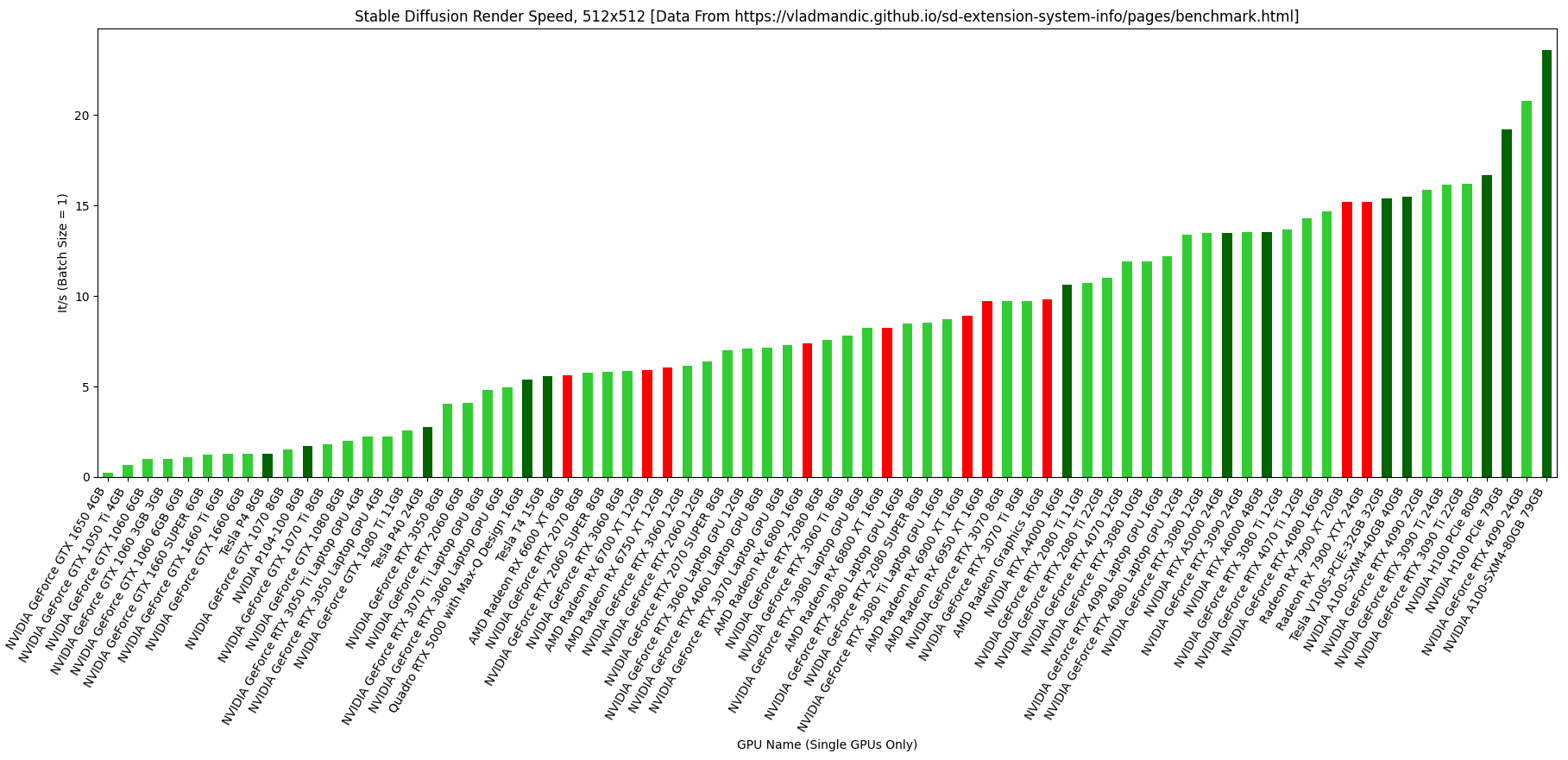
The graphic above summarizes the median 512x512 render speed (batch size 1) for various GPUs. Filtering is for single-GPU systems only, and for GPUs with more than 5 benchmarks only. Data is taken from this database (thank you vladmandic!). Graph is color-coded by manufacturer:
- NVIDIA consumer (lime green)
- NVIDIA workstation (dark green)
- AMD (red)
- Intel (blue), seems there’s not enough data yet
This is an update/prettier visualization from my previous post using today’s data.


I’m a Windows caveman over here, but you should definitely post your Linux findings on here when you’re ready! Also, if you have suggestions for how to slice this, I’d be happy to take a stab at it. This was a quick thing I did while ogling a GPU upgrade, so it’s not my best work haha.
I made a post on c/Linux about this today (https://lemmy.world/post/1112621) and added a basic summary of the Linux specific data. I’m still trying to figure everything out myself. I had to brute force the github data for a few hours in Libra Calc (FOSS excel) to distil it down to something I could understand, but I still have a ton of questions.
Ultimately I’ve just been trying to figure out what the most powerful laptop graphics cards are and which ones have the most RAM. So far, it looks like the RTX3080Ti came in some laptops and has 16GB of RAM. Distilling out the full spectrum of laptop options is hard. Anyone really into Linux likely also wants to avoid nvidia as much as possible so navigating exactly where AMD is at right now is a big deal. (The AMD stuff is open source with good support from AMD while nvidia is just a terrible company that does not give a rats ass about the end user of their products.) I do not care if SD on AMD takes twice as long to do the same task as nvidia, so long as it can still do the same task. Open source means full ownership to me and that is more important in the long term.